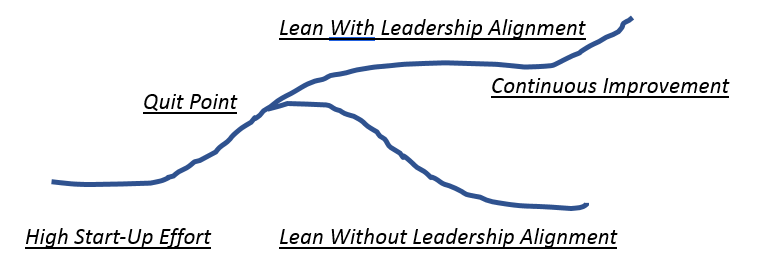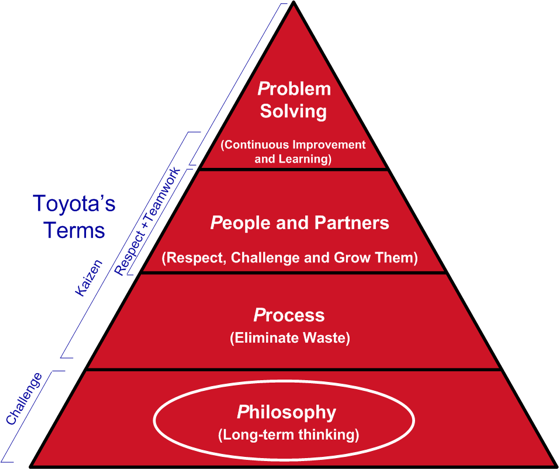Leadership has been a popular topic for philosophers and authors since the time of the Romans. A Google search of that topic produces 502,000,000 hits, so there’s still a lot of interest or confusion out there, or both. Everyone knows leadership when we see it, but in words, not so much.
First off, let’s clarify that leading differs from managing. Managers take responsibility and use authority to get employees to run known processes to set standards and thus secure quality results for customers. Leaders, in contrast, must comprehend many unknowns and engage a wide variety of people in a process of discovery. Which leadership processes and behaviors actually work best? Leadership researcher Gary Yukl describes the dearth of consistent findings:
Extensive research on leadership behavior during the past half century has yielded many different behavior taxonomies and a lack of clear results about effective behaviors. The effective pattern of behavior may involve multiple components of the same meta-category or component behaviors from different meta-categories. (1)
Since no one has a scientific definition of leadership, various authors, teachers, institutes, and professional organizations define and sell their own ideals and models. Let’s review how a few experts have defined it in the past.
What is Lean Leadership?
The Lean Enterprise Institute’s Jim Womack defines it as taking responsibility for actions that implement lean production, writing, “Drawing a quick map of the value stream, asking what needs to be done to make it flow more smoothly and taking responsibility to make something happen. That’s what lean leadership is.(2)” Author Jeffrey Liker contends that lean leaders “take responsibility for self-development followed by activities to develop employees by taking on major challenges beyond their current knowledge.(3)
My partner and I have observed the skills of hundreds of leaders and surmised eight skill areas from years of experience. They are:
1. Setting Direction
2. Standardizing and Improving Work
3. Empowering Individuals and Teams
4. Managing Change
5. Lean Coaching
6. Accountability
The first skill of “Setting Direction” means that business and site leaders reach a consensus on a future-state lean vision, and the managing principles for daily production and functional support. A lack of consensus in leadership teams is the most common cause of dwindling tangible or political support and can stall or kill a lean production line or work cell during its fragile stabilizing phase. The graph below shows why leadership alignment is important.

A leadership team can do worse than using the five questions format from the Lean Enterprise Institute:
1. What problem are we trying to solve? Lean Value Streams or a different priority?
2. How should we improve the work? Value stream mapping, kaizen blitz, Kata coaching, PDCA?
3. How will we develop the people? New Skill sets, cross-training, coaching for development?
4. What leader behavior and management systems do we need? Do we need a disciplined management system?
5. What basic mindset is going to drive this transformation? Command and control or creative PDCA with continuous learning?
Clarifying management principles involves reaching a consensus, and one way is to use the pyramid model (4) in The Toyota Way, by Jeffrey K. Liker as a basis for discussion.

A “radar chart” dialogue facilitated with a business or site leadership team to discuss the four principles on “philosophy,” “process,” “people and partners” and “problem solving” can reach a consensus upon each or modify them to fit their business. For example, each leadership team member would vote on a process principle for the factory or business in the range of one to seven, and then defend their vote.
1. Command and Control - Management values control on the shop floor or office transactions are best done by supervisors and systems. Process is secondary to getting results any way we can.
4. Management-Led Lean - Management values stability on the shop floor or office transactions, and discipline to standard work; improvements are normally through supervisors and engineers, with some input from workers.
7. Toyota Way - Management values stability, on the shop floor or office transactions, but regular kaizen and continuous improvements is expected from all members in lean events with new improvement trials or improvement coaching cycles every week.
Standardizing and improving work is well known but in some companies, it is confused with standard procedures or work instructions. Standard work is developed and refined through time by a team leader and the employees doing the work. Its key difference from procedures is the measurement of cycle times and balancing the total time at each workstation against the rate of customer sales, the takt time. Refining standard work is done in kaizen events or in weekly meetings to review new ideas for improvement.
A new and increasingly popular leadership skill is “lean coaching.” Lean coaching differs from other types like namely negotiating, teaching and challenging. One increasingly popular skill-building approach is the Toyota Kata method. Another key element is “role modeling.” This happens when lean leaders replace pushing for results and playing the blame game with mindfulness and engaging in collaborative and systematic problem solving with others.
Accountability becomes difficult when standards are unclear or managers have weak skills in dealing with conflict. Lean addresses this by posting metrics and using visual management that present clear information on what to do and how to do it.
Nick Petrie at the Center for Creative Leadership contends that developing leaders requires increasing their mental capacity to comprehend “far more complex and conscious ways of thinking, being and acting.”(5) Author’s John McGuire and Gary Rhodes write that leaders need “bigger minds.”(6) The way to develop a big mind is to teach leaders a practice of mindfulness. Mindfulness is learning how to manage your focus, holding awareness on what you choose. A sensei trains a leader be more mindful through reflection and dialogue. In my experience, these are the critical skills of a lean leader and they can be learned by anyone who “pulls” for them.
Dan Prock is a lean coach and consultant and has worked in both manufacturing and knowledge work for 25 years. He has a PhD in psychology studying leadership and is president of Sensei Way, LLC. He has worked with Kaizen Institute of America and Optiprise Consulting working in manufacturing, finance, and product development. He will be publishing a book in 2019 titled “The Sensei Way.” For more information, visit his website at www.senseiway.com.
1. Effective Leadership Behavior: What We Know and What Questions Need More Attention, by Gary Yukl, Academy of Management Perspectives, 2012, p. 66 and p. 76 2. Lean Enterprise Institute, LEI Post, 2/3/2005 3. Dr. Jeffrey Liker presentation in Portland, Oregon, 2016 4. Toyota pyramid used with permission 5. Future Trends in Leadership Development, N. Petrie, retrieved https//www.col.org/wp-content/uploads/2015/04/futuretrends.pdf, p. 9 6. Transforming Your Leadership Culture, J.B. McGuire and G. Rhodes, Jossey Bass, 2009, p. 12


